The 9th
LaureateSculpture
George Segal
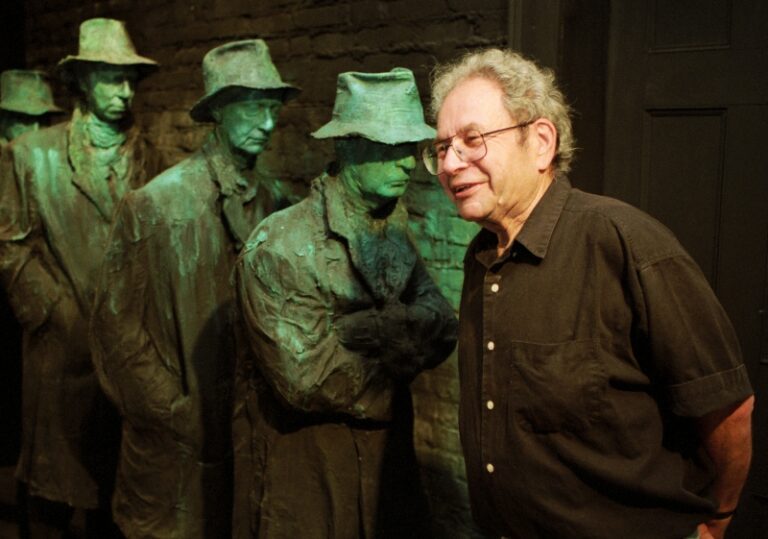
George Segal was renowned the world over for his compelling tableaux of modern American life,in which the participants – modelled entirely in plaster which had been cast directly from real people – show the kind of mute resolution that had been caught earlier on canvas by Edward Hopper. Relating his sculpture directly to the issues of the day,he made forthright comments on the Vietnam war,on racial discrimination,the holocaust and homophobia. He used his developed sense of the dramatic to telling effect in these pieces,engaging his figures in silent conversation,in still action and freezeframed against the background of the everyday continuum. Yet Segal was as much interested in the development of art and its languages as in the everyday: some of his most powerful constructions were based on work by Matisse,for example,or Cézanne.
Biography
Unsure of his vocation after graduating from New York University in 1949,George Segal married and bought a chicken farm across the road from the one his parents owned in New Jersey,intending to make a living with that rather than attempting to do art full time. At that time Segal was a painter working in a broadly brushed figurative style with links to expressionism. Gradually he began to make his way in the New York art world and he held his first solo show in 1956 at the co-operative Hansa Gallery,whose membership included a number of artists who were to become prominent in the next decade.
Segal’s approach to his subject had been formed early when he attended the Pratt Institute in Brooklyn in 1947. He found the teaching there,from some of the leading abstract painters of the day,uninspiring: ‘My teachers wanted me to paint the way they were painting. But they were talking about a totality of experience that involved the movies; literature; philosophy; the relationship between cultures; modern,outrageously avant-garde painting; old-fashioned art-historical stuff. They presented this entire mix to me and then they said,“Work in a severely restricted fashion.” I decided that I wanted my work to express the entire spectrum that my teachers were talking about. Yes,I was interested in ethics. Yes,I was interested in literary subject matter. I wanted all those elements to work together and oppose each other.’
Segal’s first sculptures – life-size figures in plaster – were,like his paintings,in an expressionist style. In terms of his future development,the most significant of these figures was one showing a man seated on a real kitchen chair. In 1961,having been alerted by a pupil to the possibilities of a new technique of surgical bandaging,he began casting figures in plaster from life. Rather than creating a figure from a mould,Segal used the outsides of the bandaged figures,removed in sections from the model,then re-assembled. Once again,he integrated these plaster figures with real elements,such as tables and chairs. This literalism immediately linked Segal to the rapidly burgeoning pop movement – emphasised by his inclusion,along with Roy Lichtenstein,Andy Warhol,Claes Oldenburg,James Rosenquist and others including several from the French Nouveau Réaliste group,in the ‘New Realists’ exhibition at the Sidney Janis Gallery in 1962. Like many of the pop artists his work often reflected the political and social issues of the day. However,he differed from many of his contemporaries in the directness with which his sculptures conveyed the ethical and moral dimension of his subject matter; The Bus Riders,1962,echoes the campaign against racial discrimination which was taking place in the USA at that time,while The Execution,1967,is a forthright comment on the horrors of the Vietnam War.
During the 1960s Segal failed to gain full recognition as a public sculptor who was interested in social and political issues,not only because of the nature of his subject matter but also because of the technique he employed – because he worked in plaster his sculpture necessarily had to be shown indoors. His first commission for a public site,The Sacrifice of Isaac (as with a number of Segal’s later sculptures,the theme is taken from the Torah) did not come until 1973,in Israel,and then it was still located indoors. Despite its sheltered location it excited fierce controversy because it was read as a criticism of militant Zionism. In 1976 Segal started casting his figures in bronze and this freed him to place them on outdoor sites where the public didactic element was more clearly obvious – the most celebrated of these is the Holocaust Monument,1983,in San Francisco. Further controversy attended many of his subsequent public commissions – such as Gay Liberation,1980,sited in Christopher Park in New York: this shows two pairs of homosexual lovers to commemorate the success of the gay liberation movement.
The 1970s and 1980s witnessed other developments in Segal’s work. He began to paint some of his figures in bright colours,and found a way of patinating his bronze figures white,so that they became the equivalents of his work in plaster. Like Roy Lichtenstein,but working in three dimensions,he explored the sources of modernism – making in 1973 a version of Matisse’s La Danse,and in 1982–83 exploring his fascination with Cézanne’s still-lifes in a series of sculptural reconstructions which demonstrated the arbitrary nature of Cézanne’s treatment of space.
Unlike many of the leading artists of the pop movement,Segal continued to experiment throughout his life. In the 1990s developed his interest in photography,exhibiting a series of images based on journeys between New York and his studio on the family chicken,photographs that have been widely compared to the work of Robert Frank. He also made a series of photo-installations,with many of the figures painted black,so that they almost disappear into their background. These last works were inspired by a preoccupation with theatrical lighting which had informed his work from the mid-sixties onwards and which remains a significant part of the work’s special magic.
Edward Lucie-Smith
He passed away on June 9,2000,New Jersey
Chronology
Transcendence with the human body in art. George Segal,Stephen De Staebler,Jasper Johns,and Christo / Doug Adams. New York : Crossroad,1991.
George Segal. still lifes and related works / George Segal ; Marla Price. Modern Art Museum of Fort Worth,1990.
George Segal / Phyllis Tuchman. New York : Abbeville Press,c1983
Retrospective George Segal. sculptures,paintings,drawings / Marco Livingstone. Montreal : Montreal Museum of Fine Arts,1997.
Invasion blanche / George Segal. introduction by Alain Robbe-Grillet. Paris : La Difference,1990.
-
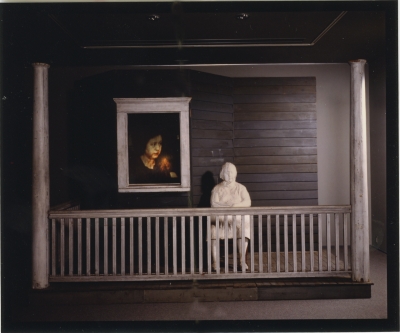
Gertrude: Double Portrait
-
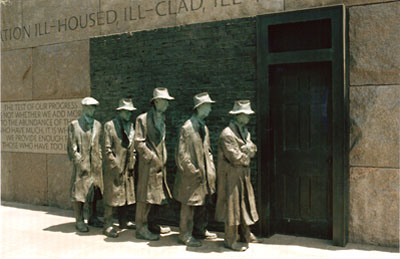
Depression Bread Line
-
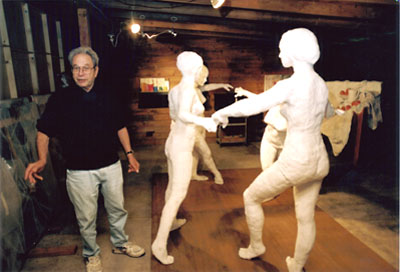
Segal with his work at his henhouse
-
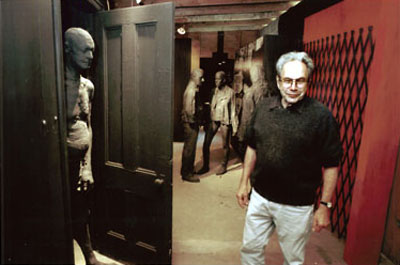
Segal in his former henhouse where his works are housed
-
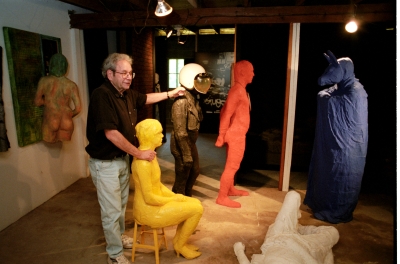
Segal with his work at his henhouse
-
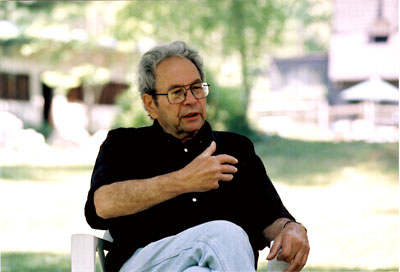
At his home 1997

